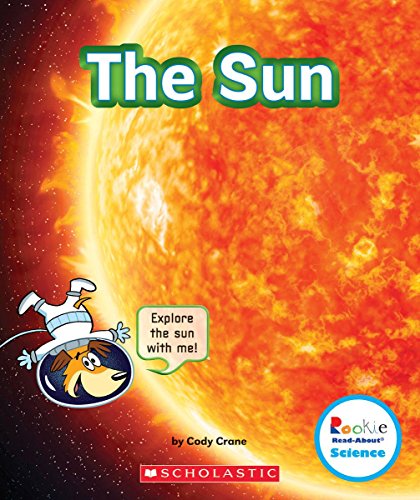-
You Can Use a Magnifying Glass
Wiley Blevins, David Larwa, Nanci R. Vargus
Paperback (Childrens Pr, Feb. 1, 2004)Simple text and photographs describe and illustrate how to use a magnifying glass. H
H
-
The Sun
Cody Crane
Paperback (Children's Press, Feb. 1, 2018)Did you know that it would take 20 years to reach the sun in an airplane?The natural world comes alive for young readers (Ages 6-7) with Rookie Read-About "RM" Science! With striking, full-color photos and just the right amount of text, this series immediately involves young readers as they discover intriguing facts about the fascinating world around them.Readers (Ages 6-7) will blast off with Rocket to learn fascinating facts like this-and more-all in the pages of this book. I
I
-
From Seed to Plant
Allan Fowler
Paperback (Childrens Pr, July 1, 2001)Describes the development of a seed into a plant by means of pollination, fertilization, and seed dispersal. J
J
-
Monkeys and Apes
Lisa M. Herrington
Library Binding (Children's Press, Sept. 1, 2015)So how do you tell the difference between monkeys and apes?The natural world comes alive for young readers (Ages 6-7) with Rookie Read-About "RM" Science! With striking, full-color photos and just the right amount of text, this series immediately involves young readers as they discover intriguing facts about the fascinating world around them.They're both primates. They both have two long arms, two legs, and hairy bodies. One way is to ask yourself if they have a tail. These identification clues and many more can all be found in What's the Difference? Monkeys and Apes. M
M
-
What's the Weather Today?
Allan Fowler
Paperback (Children's Press, March 1, 2001)An introduction of weather and climate for young readers.The natural world comes alive for young readers (Ages 6-7) with Rookie Read-About "RM" Science! With striking, full-color photos and just the right amount of text, this series immediately involves young readers as they discover intriguing facts about the fascinating world around them. G
G
-
What Is Matter?
Don L. Curry
Paperback (Children's Press, March 1, 2005)The natural world comes alive for young readers with Rookie Read-About Science!Rookie Read-About Physical Science series introduces the youngest readers (Ages 6-7) to physical science concepts. Each book features critical-thinking questions throughout the text; a simple, hands-on experiment; a glossary and more. I
I
-
Light
Cody Crane
Paperback (Children's Press, Feb. 1, 2019)Take a closer look at the science behind the incredible concept known as light.Rookie Read-About Physical Science series introduces the youngest readers to physical science concepts. Each book features critical-thinking questions throughout the text; a simple, hands-on experiment; a glossary and more. This series is aligned to the Next Generation Science Standards. Light may seem almost magical in its properties. It can travel millions of miles from the sun, it gives rainbows their color, and it makes lanterns glow. K
K
-
It Could Still Be Water
Allan Fowler
Library Binding (Childrens Pr, Oct. 1, 1992)A simple description of the uses, properties, and forms of water F
F
-
What Is Matter?
Don L. Curry, Linda Bullock
Library Binding (Childrens Pr, Sept. 1, 2004)Provides a simple introduction to the concept of matter, discussing how matter can be solid, liquid, or gas. I
I
-
Butterflies and Moths
Lisa M. Herrington
Library Binding (Children's Press, Sept. 1, 2015)Which one is which?They're both insects. They both have wings and antennas and flutter through the sky. So how do you tell the difference between butterflies and moths? One way is to ask yourself if they fly mostly during the day or at night. These identification clues and many more can all be found in What's the Difference? Butterflies and Moths. M
M
-
It Could Still Be a Fish
Allan Fowler
Paperback (Childrens Pr, Jan. 1, 1991)Identifies the characteristics of fish and provides specific examples, including the ray, guppy, eel, and seahorse J
J
-
The Stars
Cody Crane
Paperback (Children's Press, Feb. 1, 2018)Did you know that stars take millions of years to form?The natural world comes alive for young readers (Ages 6-7) with Rookie Read-About "RM" Science! With striking, full-color photos and just the right amount of text, this series immediately involves young readers as they discover intriguing facts about the fascinating world around them.Readers (Ages 6-7) will blast off with Rocket to learn fascinating facts like this-and more-all in the pages of this book. L
L